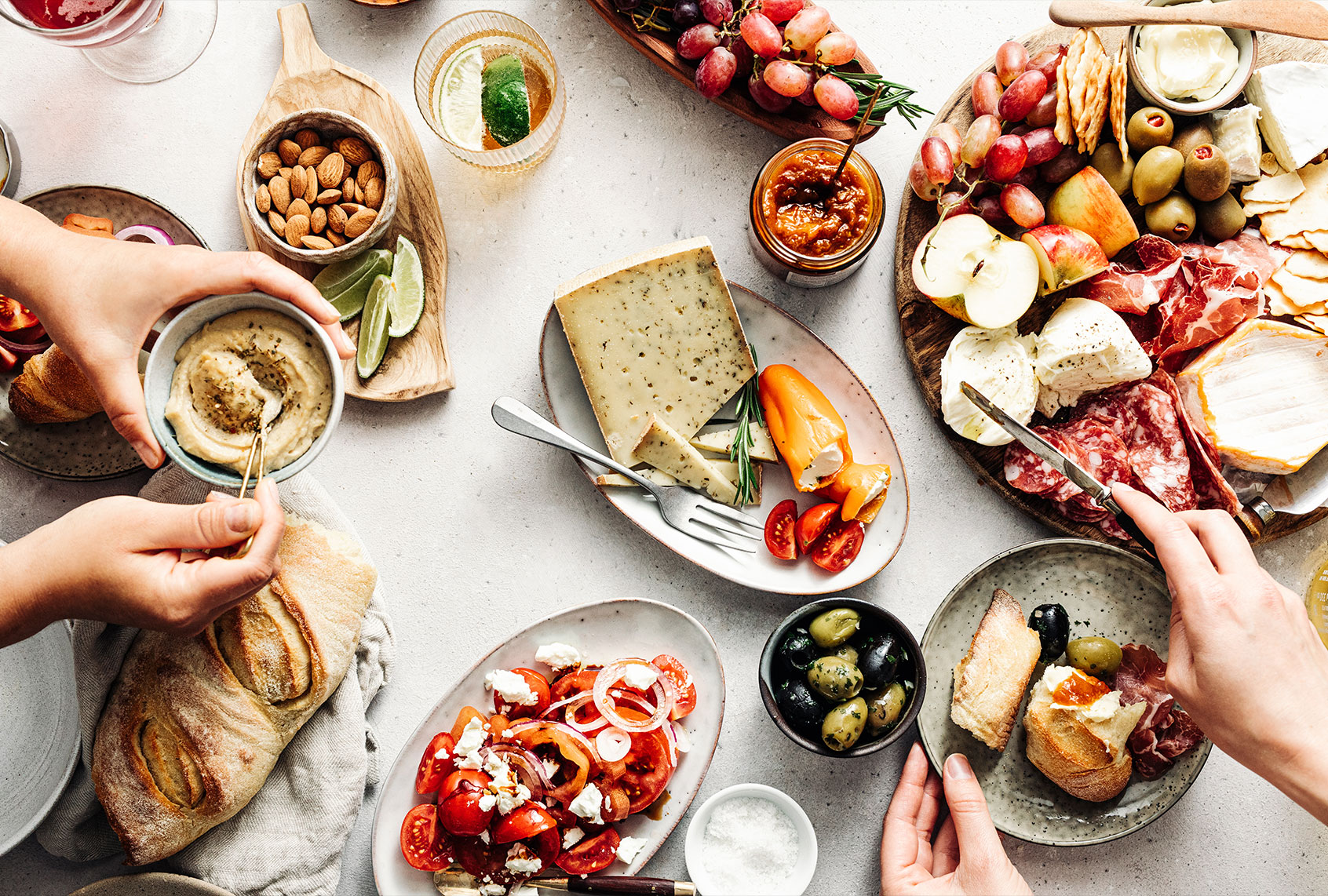While ostentatious charcuterie boards may have become all the rage in recent years, the more self-effacing antipasti platter has remained a staple in Italian and Italian-American culture — just as it has for centuries within restaurants, households, formal events and casual get-togethers. While there is some overlap between charcuterie boards, antipasti platters and cheese plates, antipasti is a superbly calibrated confluence of flavors, colors, textures and temperatures that has been perfected over the years.
As Martha Stewart notes, antipasto (the singular conjugation of antipasti) means “before the meal,” which sums up the ethos of the course. A simple, complete means of “whetting the appetite,” the origins of the antipasti platter date back to medieval times in Italy, according to Saveur. Antipasti began as a way to segue from cocktails into the heavier aspects of the meal, an ideal midpoint between the cocktail hour and the first formal course. Think of it as a way to get things going, but not overfill.
Want more great food writing and recipes? Subscribe to Salon Food’s newsletter.
Antipasti originated in 16th century Italy as a take-off on the French hors d’oeuvres and Spanish tapas. For most, the centerpiece was typically a form of cured, sliced meat, such as prosciutto or pepperoni. Food Republic notes that another piece of origin for antipasti was that each family often had an entire pig in which to butcher and find ways to use the meat, so often it would be cured and served alongside homemade cheeses and preserved vegetables.
In the present day, the ethos of antipasti endures; there is an inherent aspect of sharing and conviviality when it comes to antipasti, in that it’s rarely ever served for one person.
There’s not as much of a “recipe” for antipasti as there are conceptual guidelines — the ideal platter hits certain flavor profiles, has diversified textural components and temperatures, offers something for everyone and is designed in an eye-catching display. It’s more so an architectural feat than it is “cooking;” it’s mainly just compiling items, to be quite honest. But it is especially delicious.
Many online recipes purport to approximate the flavors of the classic antipasti platter in dishes like salads, sandwiches, pasta salads, dips and more, but the original is unimpeachable.
Kitchen Stories states that it’s best to pull all ingredients and components out of the fridge a good 20 minutes prior to serving to ensure room temperature antipasti. Use a large enough board, platter, or serving vehicle — made of stone, wood, ceramic, whatever — just make sure it’s large enough that you artfully display the antipasti and maybe add some fun little aesthetic touches to gussy up the whole affair.
Be sure to slice or cut most ingredients, just to “start them off” and so that your guests don’t have to tire themselves out hacking away at a piece of difficult-to-slice cheese or sausage. Be sure to include small spoons or utensils for spreads, jams, jellies, olives and the like.
Also, be sure to sprinkle some flaky sea salt on the majority of the components, just adding a final note to really amp up the flavors, and maybe a light drizzle of high quality olive oil.
There should be distinction and diversity within the color, temperature, texture and flavor profiles of the ingredients presented. Fresh raw herbs can be a fun, verdant touch, but they’re mainly just decorative. Lastly, make sure to have some bread or crackers on hand to act as the vehicle to deliver the wonderful antipasti options, as well as condiments to act as a “glue.”
Here, we’ve outlined the myriad options to help you put together the world’s best antipasti platter. Choose a few options from each category, consider how those flavors might blend, and dig in! We bet your guests will love it.
***
Antipasti Assembly
Choose several items from each category
The meats and proteins: prosciutto di parma, capicola, sardines, anchovies, pepperoni, pancetta, sopressata, salami, mortadella, dried sausages, smoked salmon, paté
The cheeses: parmigiano reggiano, pecorino romano, brie, taleggio, manchego, high-quality blue cheeses, provolone, fresh mozzarella, asiago, grana padano
The veggies: pepperoncini, chickpeas, mushrooms, marinated artichokes, pickled onions, giardiniera, oil-marinated zucchini, olives, radishes, thinly shaved raw fennel, fresh herbs, capers
The fruits: sun-dried tomatoes, marinated cherry/grape tomatoes, dried cranberries, currants, raisins, cantaloupe, cherries, apples, oranges, berries, grapes, bruschetta, figs, apricots
The condiments: honey, mostarda di frutta, Dijon mustard, jams, marmalades, chutneys, olive tapenade, pesto
The nuts: macadamia, pistachios, almonds, walnuts, chestnut, pecans, peanuts, cashews, hazelnut
The carbs: baguette, pumpernickel, crackers, crostini, flatbread, sourdough, focaccia, ciabatta, carta di musica, rye, peasant loaf
More by this author:
- On Porchetta: An ode to the East Village stalwart
- Beyond Chicken parmesan? Notes on alt-milks and vegan cheese from an Italian kitchen
- Want impossibly crisp chicken parmesan? Try this simple sheet pan layering trick
- Demystifying buttermilk: How to use this amazing ingredient to make chicken cutlets, desserts & more

